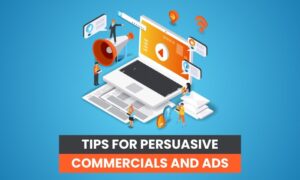The average SEO-focused product page converts at only 2.9 percent, which is among the reasons many companies pursue paid advertising traffic to achieve their goals and KPIs.
But creating custom, campaign-specific landing pages is resource-intensive, and not every team has the necessary tools, expertise, or personnel to build the content. So, how do you know if you need a custom page or if you can safely send paid traffic to an organic page and still achieve your KPIs? This three-step, data-driven evaluation helps answer this question.
Paid vs. SEO landing pages — why have both?
Before diving into the evaluation process, you need to understand why having paid and organic pages is crucial and some of the drawbacks when you send paid traffic to your organic pages without analyzing them beforehand.
First, search intentions often differ between paid and organic users, and each group will have different content needs. We can classify these users into two groups based on whether they use high-intent or low-intent keywords.
Per WordStream’s definition, people who use high intent keywords like “best” want to conduct a transaction or perform an action, such as inquiring about a service, which can lead to an eventual conversion. This behavior aligns with the motivations of paid users, 75% of whom engage with ads because they believe landing pages make it easier to find their desired information.
In comparison, WordStream defines low intent keywords as navigational or informational in nature instead of transactional.
For example, somebody who wants to learn about a specific topic is more likely to use a longtail keyword and less likely to commit to a purchase because they’re gathering information rather than making a decision. Organic results are better suited for longtail terms, so the user will more likely engage with the organic SERP result rather than an ad.
These behavioral differences create a challenging situation for users and content creators.
Because organic content must play by Google’s rules, paid users are forced to sift through irrelevant information, which can increase bounce and exit rates and decrease conversion rates. And sadly, you can’t simply remove the extra information from the page because organic users and search algorithms need it.
Second, mixing paid and organic traffic on the same page makes it difficult to separate and track audience-specific user behavior, content performance, and conversion rationale. Without data clarity like closed-loop analytics, you can quickly get a misleading picture of content performance and miss crucial KPIs because of your clouded judgment.
Consequently, in most cases, directing the paid traffic to a custom-built, campaign-specific landing page produces higher quality conversions. You can ignore all SEO rules, which empowers you to accommodate user intentions and elicit specific user behaviors.
With the forewarning out of the way, let’s break down how organic page performance can determine if you need custom landing pages to achieve your goals.
Step 1: Gather and analyze performance baselines from multiple data sources
The first task is to gather and analyze a lot of data — from multiple sources — that shows you exactly how well your organic page is performing. Ideally, you want to scrounge up analytics data, user behavior insights, and keyword rankings. Even if you wind up making a custom paid page, this effort still pays dividends by highlighting the strengths and weaknesses of your organic content.
Analytics data
You’ll start by collecting a smattering of classic analytics data points from your preferred analytics platform to gain insights about page performance over time.
If your content is old enough, gather the following data in three-month, six-month, and one-year intervals. The breadth of data makes it easier to spot recurring themes and create a more educated guess about what will happen if you send paid traffic to the page.
Remember to filter the metrics so you’re only getting data from organic traffic sources.
Pageviews and unique pageviews
Imagine you have a well-optimized product page that converts with organic visitors at an even three percent. However, you need the equivalent of a five percent monthly conversion rate to reach the year’s KPIs and maintain a healthy company.
You can use pageview data to calculate how much missing traffic you need to conjure, either targeting new keywords or starting a paid campaign. For example, suppose you currently get 100 pageviews every month and three conversions. In that case, you’ll roughly need an additional 67 pageviews per month to get five conversions at the three percent conversion rate.
If that traffic growth is not feasible with new or improved keyword rankings, then paid traffic is a solution to consider.
Should you decide to send paid traffic to that page, you can also calculate the difference between pageviews and unique pageviews to estimate how many returning users you can effectively target in a PPC retargeting campaign.
Time on page and bounce rate
Paid landing pages are designed to be simple, straightforward, and action-oriented. The following image is an excellent example of this concept:
Lengthy or complex paid pages generally suffer from high bounce rates and low conversions. If people are spending more than one or two minutes on the page without converting, it’s a sign the content isn’t convincing enough to convert, and it needs alterations.
On the contrary, organic pages can thrive with relevant content, internal links, and other information to capture rankings and keep people interested.
You want a high time on page because that means people care about the content you provide, which sends positive ranking signals to search engines.
If you’re seeing an average time on page three minutes or more from your organic page, it’s likely not a good fit for paid users. You can always redesign or reorganize the page to accommodate paid traffic, but you risk isolating your organic users by being pushy with conversion-focused information so early.
Previous page path and conversions
Among the most challenging aspects of organic conversions is understanding what stage of the buyer’s journey somebody is in.
Are you converting with high-funnel users? Or do your users first view a case study or blog post and then visit the product page, only to leave and return later? Knowing the answer lets you see what type of content matters most from a conversion standpoint and helps determine if your content is reaching the right people at the correct time.
If your organic conversions rely heavily on return visits or high page depth, sending paid traffic to the page likely will not improve your conversions. Paid users will lack the previous knowledge and feel overwhelmed or dissatisfied, with many bouncing from the page.
Event and goal tracking data
Event and goal tracking are two types of user behavior insights you can use to determine what content users care about the most. This process also illuminates what content users often disregard, which can then be removed from the page. Knowing this information helps you determine if time-starved paid users will be interested in your existing content.
Set up the following metrics as events or goals in your analytics tool to lay the groundwork.
Hyperlinks
Do you know how many clicks each hyperlink on your page gets? If not, how do you know users find them helpful?
Traditionally, paid pages don’t have any engagement options that take people away from a conversion point. However, most organic pages do.
So, if you’re going to use an organic page for paid traffic, you’ll need to only provide internal links that add significant value and actively engage users. Otherwise, if paid users stick around, they may get lost down the rabbit hole and then abandon the site without converting.
Videos and completion rates
If you have video content, particularly content that explains your product or service, it’s crucial to know how well that video performs and how often people complete it.
If the video has high engagement and completion rates, it’s useful to include it high up on organic and paid pages. However, if most users only watch 25 percent or less of the video, then pushing it further down the organic page and omitting it from a paid page is a smarter choice.
Forms
Forms are often a high-friction page element that can easily frustrate users, especially when visiting a page with conversion intentions. Your forms need to be flawless.
If you’re noticing that users get stuck on a form or abandon it, you need to rework the form. Paid users expect forms to be simple, only require absolutely necessary information, and take very little effort. If your organic forms can’t do that, either replace the form or build a custom paid page with a bare-bones version.
CTAs
CTA location, text, and purpose dictate a lot of your page’s conversion potential. If your organic page has multiple CTAs, you need to accurately track which one gets the most engagement. If you choose to send paid traffic to the page, then the highest-engagement CTA should be the first CTA option shown.
Additionally, every CTA should be:
-
Visually distinct
-
Above the fold (in most instances)
-
Actionable with precise copy
-
Avoiding generic statements like “learn more,” “buy now,” or “subscribe”
-
Giving users an idea of what happens after interacting with the CTA
If you have too many competing CTAs, or for whatever reason, your organic page can’t meet these requirements, then you need to create a custom paid page instead.
Navigation interaction
Most paid pages include a link back to the main website but not full navigation options. Organic content doesn’t have this luxury. Knowing how many of your users interact with the navigation after landing on the organic page in question is crucial to predicting what a paid user may do.
For example, suppose your page gets 2,500 organic visitors per month and 1,963 of them leave the page via navigation options. In that case, that’s a great sign that the page is either lacking conversion intent or doesn’t have enough information to convince users to convert. Either way, it’s not the behavior you want to see from paid traffic.
Heat mapping and click-tracking data
Once you’ve gathered your analytics data and set up event tracking, the next step is to collect and analyze data from a heat mapping tool like Hotjar or Mouseflow. The goal is to discover how users interact with the existing page, notice troublesome areas, and determine if those behaviors align with paid landing page best practices.
Let’s break down the types of information you’ll want to collect and how to evaluate it.
Heat mapping and scroll depth
Do you know how much of your organic page is seen by the average user before they leave the page or convert? Heat maps will tell you.
Paid pages are purposefully short so users don’t have opportunities to get distracted or disappointed by the content. If your scroll depth is deep enough that more than 75 percent of users see the most important content on the page, then the page layout and content priority may be okay for a paid user. However, if you’re seeing 30-plus percent of users leaving after scrolling just past the hero region, then paid users will most likely follow suit and you’ll either need to design a new page or alter the existing one.
Click tracking
Click tracking is a great way to visualize and confirm the event tracking data you set up previously. The maps can also pinpoint engagement issues or opportunities you may have overlooked.
The goal of click tracking is to figure out what content users care about the most. If you can naturally surface that information at the top of the page, then your paid users will be more likely to stick around. If that’s not possible, then you can design a paid page using the most popular organic page elements as inspiration.
Mouse flow
Mouse flow lets you observe the mouse movement of your users. Sometimes users hit friction points that we can’t detect by monitoring scroll depth, clicks, or other common engagement factors. These scenarios are where mouse flow reigns supreme.
While a mouse flow report is often an erratic mess of multi-colored blobs and squiggly lines, you can use it to understand what content your users may spend more time looking at or read more carefully based on where the mouse moves.
For example, in the following image, the mouse flow shows that more users hover their cursor in the “Inner Circle Guide to Next-Generation Customer Contact” section than any other content block.
Although the CTA associated with this section isn’t showing a high click density, the mouse flow report determines that users have some level of interest in the topic. If this example was on your website, you could shuffle the content order to prioritize the popular content or run A/B tests to determine if the language or information needs to be changed or simplified for a paid user’s short attention span.
Session recording
Watching actual users interact with your organic page is by far the most valuable way to determine what does and doesn’t work about your content. Most heat mapping tools let you set up recordings based on triggered events, such as clicking into a form.
You can observe the user’s entire interaction with your page and determine if the behavior is consistent among converting customers. If the behavior is consistent, it’s feasible that paid users may act the same way. However, if the recording behavior is erratic (and it likely will be), then you’ll want to build a custom page to provide a more “hand-held” experience.
Step 2: Map user behavior data to your KPIs
Now that you’ve collected and analyzed all of your data, it’s time to start looking for patterns and mapping the desired user behavior to the actual user behavior your data shows. If the two align, you’re in a great position to send paid traffic to your organic page and hopefully reap more conversions.
However, suppose there is a discrepancy between the desired and actual behaviors. In that case, you’ll need to map user behavior with specific stages of the customer journey and sales funnel, and then build a paid page that amplifies the desired behavior based on how you see users interacting with your organic page.
Let’s break down an example.
Recently, one of Portent’s clients chose to design a PPC version of an organic product page because the page wasn’t converting at their desired rate — despite already funneling paid traffic to it.
Before the client could design the new campaign content, they needed to determine what conversion-focused information users engage with most on the organic page. Otherwise, they risk supplying users with unnecessary information and wasting ad spend.
I analyzed three months of event tracking data from Google Analytics and Hotjar to determine exactly how users interacted with the product page. To narrow the results, I only focused on page elements with a call to action or internal link to pages that may lead to a conversion, such as the client’s demo page or case study archive.
Once I established which page elements get the most attention, I then isolated the users’ behaviors by using Hotjar’s filters to watch session recordings that contain the chosen events.
I watched 20 recorded user sessions to see what information people interacted with first and which they ignored, how long they took to digest the content, friction-causing UX elements, and what additional pages or resources they viewed. I then took these learnings and built a PPC campaign page that told the client’s story in the order converting users demonstrated.
The client is still building the page, so I can’t report on how well it performed. However, in theory, they should earn higher conversion rates on the paid campaign page because I isolated the content that converting users interacted with, which eliminated any non-esstial information.
Step 3: Make your choice
Now that you understand how your users interact with your organic page and some of the restrictions and considerations that come when sending paid traffic to organic content, you can choose. Invest the time and resources into building a custom paid campaign, or modify your organic content to try and target two user groups in one fell swoop?
Creating the paid page will likely give you better and more consistent results, but there is also little harm in trying your organic page first if you think it’s good enough. Run a small test, say 20 percent of your advertising budget for this project, and see if the page performance improves. If it doesn’t, then you have a definitive answer and you’re prepared with the resources you need to build a stellar paid landing page.



